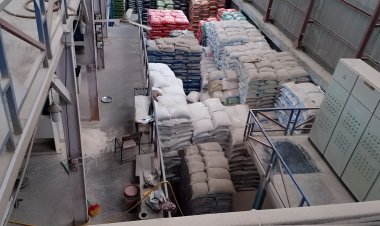The Rise of Coffee Culture in Nepal: A Story of Growth and Opportunity
Learn about Nepal's growing coffee culture and how it's affecting the economy of the nation. Discover the history, methods of production, and unique tastes of Nepalese coffee.

Coffee is not a native crop to Nepal, but it has slowly been establishing itself in the agricultural sector of the nation. The development of coffee in Nepal has been slow and difficult, but it has also been one of consistent growth.Today, Nepal is one of the world's top producers of Arabica coffee beans, and its coffee culture is expanding. In this article, we will take a look at the evolution of coffee in Nepal and how it has become a part of the country's cultural fabric.
Early Days
The first coffee seeds were planted in the Aapchaur of the Gulmi District by a hermit named Mr. Hira Giri in the late 1930s, who brought the seeds from the Sindhu Province of Myanmar (then Burma). However, until the 1970s, coffee failed to draw much interest in Nepal. In the late 1970s, the Nepal government began distributing seeds imported from India to smallholder farmers in potential districts through the Agriculture Development Bank, which was the first-time recognition of coffee as a potential cash crop.
The Eighties
Coffee began to become more popular commercially in the 1980s, although in its early years, coffee plantations were also used to stop soil erosion. The Tinau Watershed Project (1982) promoted the plantation of coffee on terrace risers. Processing coffee began in 1983 with the establishment of Nepal Coffee Company (NeCCo) in Manigram, Rupandehi, which processed dry cherries collected from farmers.
In Gulmi, where the first seeds were believed to have been planted, initiatives were swift. The first coffee nursery in the nation was founded by farmers in Gulmi in 1981, and a Coffee Development Center was founded in Aapchaur in 1984. In 1990, farmers in Palpa united together to create the Coffee Producers Group.
Formal Institutional Structure
A formal institutional structure, the National Tea and Coffee Development Board (NTCDB), was finally set up in 1993 with a view to leading initiatives for the development of the coffee sector. A year later, Nepal delivered the first shipment of dry-processed green coffee beans to Japan. In that fiscal year (1994/95), Nepal produced coffee equivalent to 12.95 tonnes. In 1998, Nepal Coffee Producers Association(NCPA), the national-level association of coffee farmer groups, business people, and cooperatives, was formed, which now has more than 1,900 members.
The Slow Emergence of Coffee as a Cash Crop
Nepal, a country that prefers tea to coffee, took a long time to adapt, which resulted in poor local demand. Limited export capacity and lack of income-generating and technical knowledge further held back coffee's potential. However, among the noted coffee outlets of the present time, Himalayan Java Coffee started as the first specialty coffee shop in Nepal back in 1999/2000 when coffee culture was still non-existent. But after 1990, tourism slowly began to grow, which also helped to shape coffee habits.
The Turnaround
Following 2002, farmers, mostly from the mid-hill region, began to recognize coffee as a highly valuable crop due to rising exports and domestic consumption. It was the start of the third wave of coffee consumption worldwide. With an output of 139.2 tonnes, coffee production hit a triple digit for the first time in 2001/02.
The Collective Trademark 'Nepal Coffee'
The first coffee policy in Nepal was introduced in 2004 as a result of these developments. A year later, organic certification began, and in 2010 the Department of Industry registered the "Nepal Coffee" logo.
The Nepal Coffee brand has gained popularity globally, and it has been registered in the European Union (EU) and seven other markets, including South Korea, Singapore, Japan, Norway, Switzerland, New Zealand, and Hong Kong. The branding move was introduced to establish the Nepal coffee brand in the global market, discourage the export of inferior coffee, and gain a competitive advantage and market opportunities.
In 2014, a Coffee Research Center was established in Baletaksar, Gulmi, after the outbreak of Seto Gabaro, commonly known as Coffee White Stem Borer, intensified. In Nepal's third-generation trade strategy, Nepal Trade Integration Strategy (NTIS 2016), coffee was acknowledged as a potential export sector, but it didn't make the priority list, so no action plans were created for the sector.
However, the global market experienced changes with shifts in consumer preferences in terms of quality, taste, and varieties, especially towards specialty coffee. Nepal's potential to cater to a niche segment that loves specialty coffee also started becoming more evident. Nepali coffee is exclusively Arabica variety and further qualifies as a specialty coffee in specific markets for its distinct aroma, production outside the traditional tropical zone in the highlands, community-based production, and organic content. Around 70% of all coffee consumed worldwide is of the Arabica variety.
A five-year National Sector Export Strategy (NSES 2017) was created with the technical assistance of the International Trade Centre (ITC) in order to increase the production and quality of coffee in Nepal. The strategy aims to expand the production of high-quality coffee cherries, develop support capacities for cooperatives to improve green bean quality, and develop and promote organic certification and establish a certification process.
In conclusion, Nepal's coffee culture has changed over time, beginning with a slow introduction in the 1930s and gaining momentum in the 1980s. The establishment of institutional and policy frameworks and the promotion of coffee as a cash crop have played significant roles in the rise of coffee culture in Nepal. The collective trademark "Nepal Coffee" has gained popularity globally and has helped establish Nepal's presence in the global coffee market. Nepal's potential to cater to the specialty coffee market is becoming more evident, and efforts are being made to improve the production and quality of Nepali coffee. With the rise of coffee culture, Nepal is slowly but surely making a name for itself in the global coffee industry.
Frequently Asked Questions (FAQ)
-
When was coffee first introduced in Nepal?
Coffee was first introduced in Nepal in the late 1930s when Mr. Hira Giri planted the first coffee seeds in the Aapchaur of the Gulmi District. -
What were the initial challenges faced in the development of coffee in Nepal?
The initial challenges included lack of interest, limited local demand, poor export capacity, and lack of income-generating and technical knowledge. Nepal's preference for tea over coffee also hindered the development initially. -
What was the role of the National Tea and Coffee Development Board (NTCDB) in the coffee sector?
The National Tea and Coffee Development Board (NTCDB) was established in 1993 to lead initiatives for the development of the coffee sector. It played a crucial role in providing institutional support, promoting coffee cultivation, and facilitating the growth of the industry. -
When did coffee production in Nepal reach triple digits for the first time?
Coffee production in Nepal reached triple digits for the first time in the fiscal year 2001/02 when it produced 139.2 tonnes of coffee. -
What is the significance of the "Nepal Coffee" branding?
The "Nepal Coffee" branding has gained popularity globally and has been registered in multiple markets. It helps establish Nepal's presence in the global coffee market, discourages the export of inferior coffee, and provides a competitive advantage and market opportunities. -
Where has the Nepal Coffee brand been registered internationally?
The Nepal Coffee brand has been registered in the European Union (EU) and seven other markets, including South Korea, Singapore, Japan, Norway, Switzerland, New Zealand, and Hong Kong. -
What factors contribute to Nepali coffee being considered a specialty coffee?
Nepali coffee is considered a specialty coffee due to factors such as its exclusive Arabica variety, distinct aroma, production in the highlands outside the traditional tropical zone, community-based production, and organic content. -
What strategies have been implemented to increase the production and quality of coffee in Nepal?
A five-year National Sector Export Strategy (NSES 2017) was created to increase the production and quality of coffee in Nepal. It focuses on expanding high-quality coffee production, improving green bean quality through cooperative support, promoting organic certification, and establishing a certification process. -
How has coffee culture evolved in Nepal over time?
Coffee culture in Nepal has evolved from a slow introduction in the 1930s to gaining momentum in the 1980s. The establishment of institutional and policy frameworks, along with the promotion of coffee as a cash crop, has played significant roles in its rise. The growth of tourism also contributed to shaping coffee habits. -
What is the current position of Nepal in the global coffee industry?
Nepal is gradually making a name for itself in the global coffee industry. It is now one of the top producers of Arabica coffee beans and has gained recognition for its specialty coffee. However, its position in the global market is still developing. -
What is the history of coffee and its origins?
Coffee has a long and rich history that dates back to ancient times. The origins of coffee can be traced to Ethiopia in the 9th century, where the practice of cultivating and consuming coffee cherries began. From there, coffee spread to the Arabian Peninsula, where it became an integral part of Arab culture. In the 15th century, coffee reached Europe and quickly gained popularity. Coffeehouses became social and intellectual hubs, facilitating the exchange of ideas. Over time, coffee cultivation expanded to various regions around the world, leading.
What's Your Reaction?




































































































